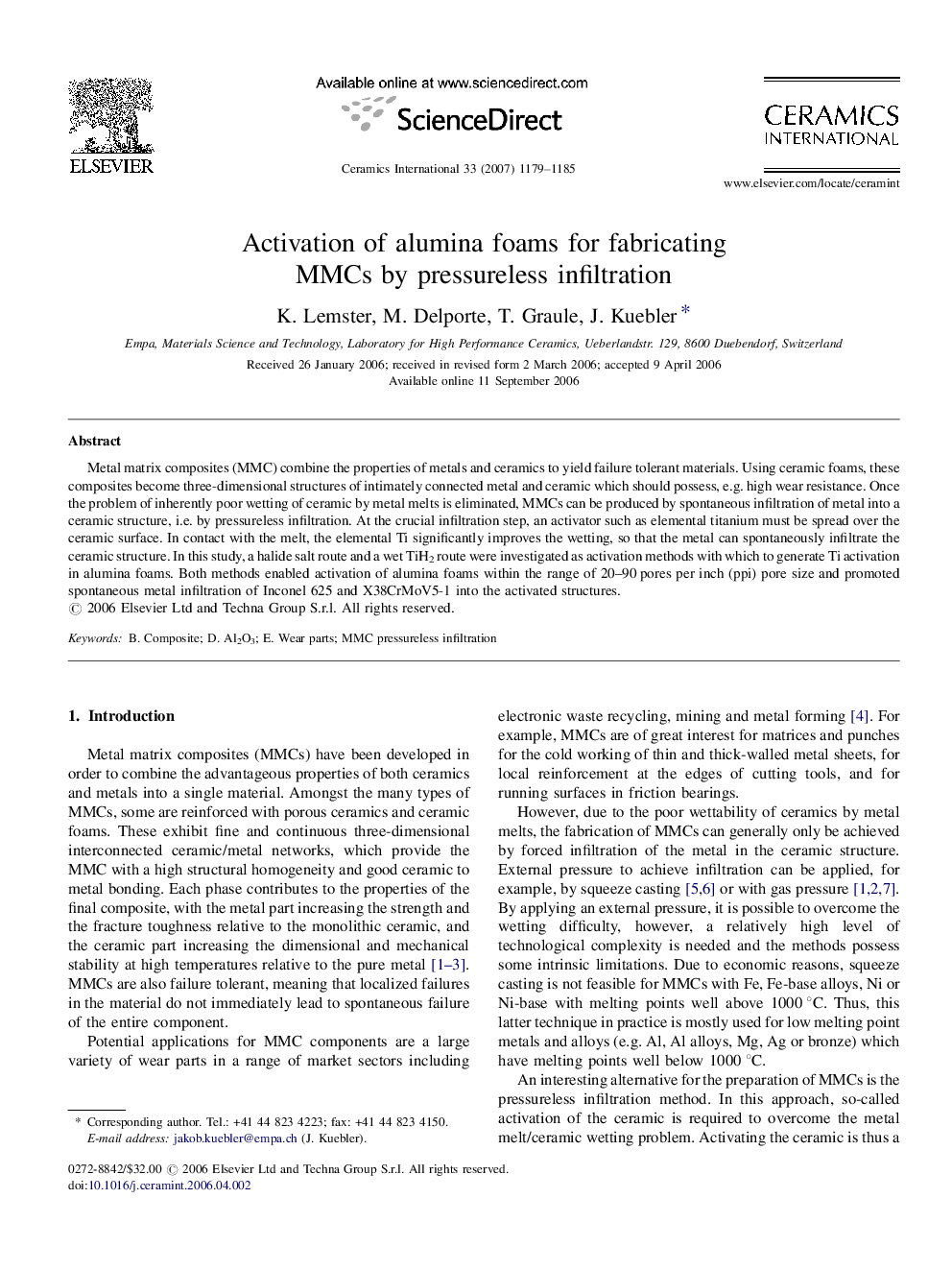| Article ID | Journal | Published Year | Pages | File Type |
|---|---|---|---|---|
| 1465154 | Ceramics International | 2007 | 7 Pages |
Metal matrix composites (MMC) combine the properties of metals and ceramics to yield failure tolerant materials. Using ceramic foams, these composites become three-dimensional structures of intimately connected metal and ceramic which should possess, e.g. high wear resistance. Once the problem of inherently poor wetting of ceramic by metal melts is eliminated, MMCs can be produced by spontaneous infiltration of metal into a ceramic structure, i.e. by pressureless infiltration. At the crucial infiltration step, an activator such as elemental titanium must be spread over the ceramic surface. In contact with the melt, the elemental Ti significantly improves the wetting, so that the metal can spontaneously infiltrate the ceramic structure. In this study, a halide salt route and a wet TiH2 route were investigated as activation methods with which to generate Ti activation in alumina foams. Both methods enabled activation of alumina foams within the range of 20–90 pores per inch (ppi) pore size and promoted spontaneous metal infiltration of Inconel 625 and X38CrMoV5-1 into the activated structures.
